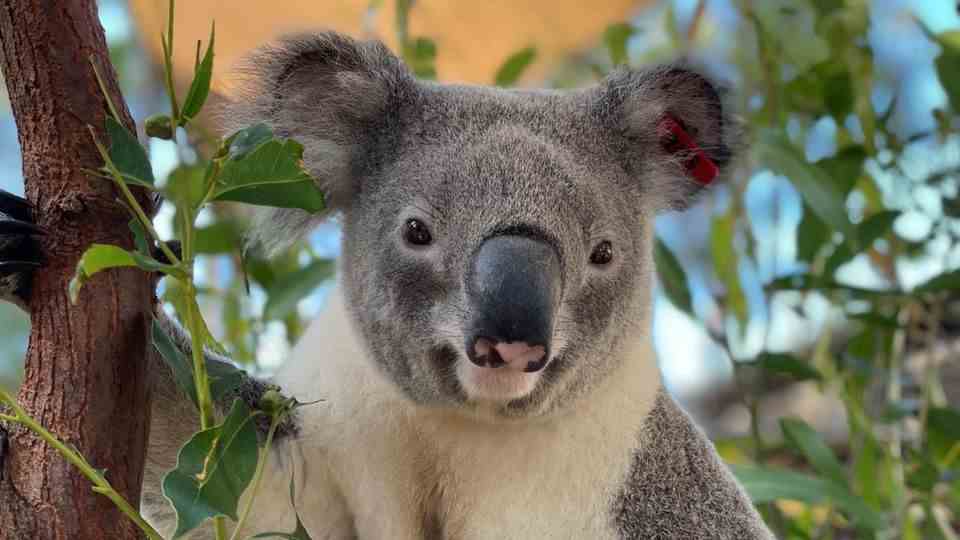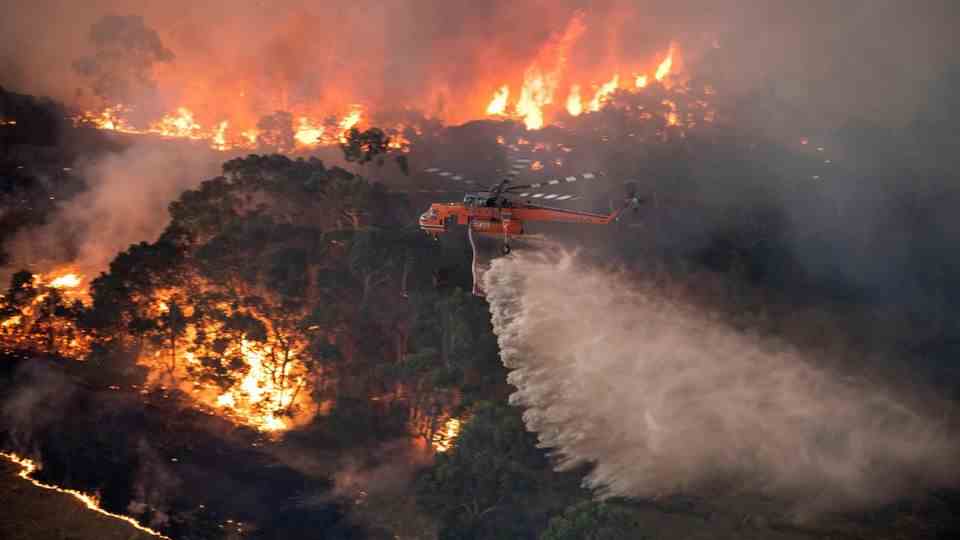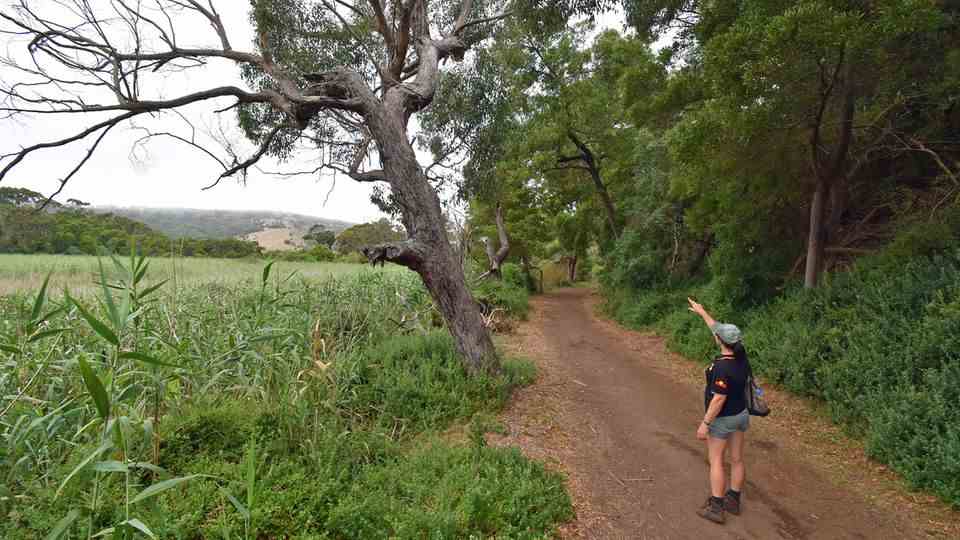The already endangered koalas have lost even more habitat due to the forest fires in Australia. To feed the sick, weakened animal colonies, scientists have bred three “super” koalas.
They are small, cute, extremely popular, something of a landmark in Australia – and threatened with extinction. The number of koalas has dropped drastically over the past few decades. In February, the states of New South Wales, Queensland and the Australian Capital Territory officially classified the marsupials as “endangered”. A study of Australia Koala Foundation assumes a maximum of 58,000 living specimens throughout the country. In just three decades, the population has declined by 30 percent.
Fires killed thousands of koalas
The koalas are victims of dog attacks or traffic accidents. In addition, chlamydia infections weaken the animals. But what affects them most is the loss of their habitats. During the devastating bushfires between June 2019 and February 2020, more than 15,000 individual fires burned millions of hectares of forest. The natural disaster went down in Australian history as the “black summer”.
Of the WWF speaks of “one of the greatest disasters in modern history for the animal and plant world”. According to a study by the environmental organization, around three trillion animals died in the fires, including 60,000 koalas. Due to global warming and a lack of rainfall, the frequency and intensity of bushfires have steadily increased. By 2050, experts expect another 25 percent increase in extreme fire events.

After the forest fires in the Australian summer of 2019-2020, numerous koalas had to be fed, but for around 60,000 animals any help came too late
© Takeyuki Hitokoto / Picture Alliance
“We’ve seen a drastic inland decline for koalas due to drought, heat waves and water shortages. I’ve seen some landscapes that look like the moon – with dead and dying trees,” said Deborah Tabart, director of the Australia Koala Foundation “black summer” in the “World“. For the previously threatened koalas, the natural disaster meant a serious loss.
Koalas are losing habitat
“Populations were in trouble, especially in New South Wales, long before the Black Summer 2019/2020 bushfires,” quoted Die Welt as saying Aliison Kelly, vice president of animal welfare organization Friends of the Koala. Because the habitat of the animals had already become less and less. Huge tracts of forest have been cleared over the years, particularly in Queensland and New South Wales, to make way for agriculture, infrastructure and urban development.
For marsupials, these developments introduced a new set of threats to forests: dogs, automobiles, pesticides, and extreme habitat fragmentation into isolated areas. This in turn has the consequence that only a very limited gene flow can take place in the individual koala populations during reproduction. Inbreeding is on the rise, explains Stephen Johnston, a koala expert at the University of Queensland. A pool of genes that is as diverse as possible is also important so that the animals can adapt to changing environmental conditions. Low gene flow makes populations less resilient – another threat to the already endangered koalas.
Breeding koalas with various genes should help
This is where the University of Queensland’s Living Koala Genome Bank project comes in. In collaboration with the “Dreamworld” animal park, researchers have bred koalas “with high genetic value”, as the university on theirs Website reported. The three animals – “Jagger”, “Bowie” and “Freddie” – could potentially turn the tide of endangered koala colonies along the East Coast and play a vital role in saving their species. “When the populations get too small, some kind of management is required,” explains Johnston in a video from the university. To do this, the expert started a controlled breeding program: The scientists crossed two wild koalas from different populations, whose genes had previously been analyzed, in the zoo.

“Jagger” is one of the three breeding koalas that is supposed to help his fellow koalas to survive
© University of Queensland
After some time, the offspring will be released back into the wild and reproduce as often as possible in order to introduce their genes into the local populations and thus increase the genetic variation in the individual koala groups. “Jagger” recently abandoned Johnston and his team in a colony in Elanora Conservation Park. The bred animal “is fully vaccinated against chlamydia, disease free and – thanks to its diverse genetics – will help protect koalas in this population from the risks of inbreeding,” reports Johnston. ‘Bowie’ and ‘Freddie’ are also set to be released into the wild soon.
On-site veterinarians
The expert sees the project as the first step in making the animals more resistant to diseases and climate change. A model to achieve the long-term protection of koalas in the wild. At the same time, however, Johnston also emphasizes that the breeding animals are not the solution for the future of the species, but rather a supporting measure.
Johnston’s colleague Sean FitzGibbon takes a different approach. With a team of wildlife researchers, the University of Queensland scientist has managed to rehabilitate a dwindling koala population on the south side of Brisbane. The experts examined each individual animal in detail. Injured or sick individuals were caught and treated immediately. With these “concentrated, continuous efforts”, according to the report by FitzGibbon “turned the fate of the declining population”.
Protection of habitat the most important measure
At the beginning of the project, 60 percent of the marsupials were infected with diseases and the population collapsed. In the meantime, the animals are multiplying again and are largely free of infections. “The general health of this population has improved noticeably,” reports the researcher. The on-site work was the key to success. “Being able to conduct a full, clinical investigation in the field is critical to determining if we have a disease, how prevalent it is, and how effectively we can clean up this colony,” says wildlife veterinarian Dr. Amber Gillett.
However, both projects concluded that while such steps are effective ways to protect koalas, ultimately the root cause of the problem – habitat loss – must be addressed. “Preventing the spread of disease and protecting, buying up or rehabilitating habitats” should come first, says koala expert Johnston. This is the only way for the country’s animal symbol to have a chance to recover in the long term.
Sources: Australian Koala Foundation“The world“, University of Queensland (I), University of Queensland (II), WWF (I), WWF (II)



